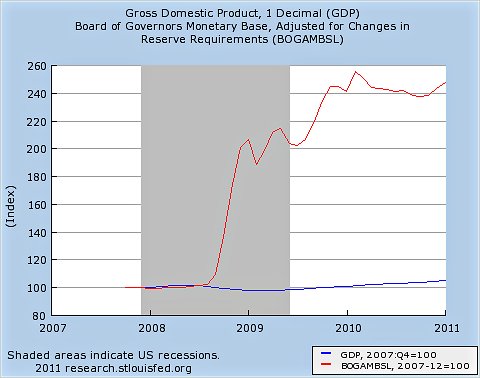How is that recorded on the balance sheet?
You tell me, you're the one who wants to make a one-sided entry.
What? You just said that liabilities are unchanged. So you are the one making a one-sided entry.
When the Fed brings assets onto its balance sheet, liabilities must go up. Likewise, when assets fall, liabilities must go down. They must balance. Liabilities of the Fed - primarily currency and bank reserves - are part of the money supply. So when any asset is removed from the balance sheet of the Fed for any reason, liabilities - the money supply - falls.
This is one reason why Paul's proposal is DOA.
I said liabilities are unchanged because "canceling" assets doesn't change liabilities.
Yes, when the Fed expands their balance sheet by "printing money" (liabilities) they use the money to buy assets. The only way you remove liabilities (cash or bank reserves) is by selling assets for cash or bank reserves.
Giving assets away doesn't remove cash or bank reserves from the money supply.


